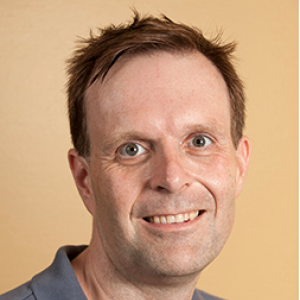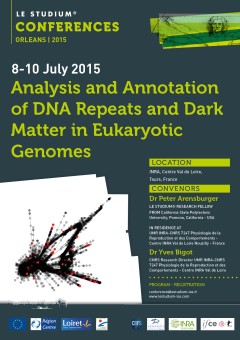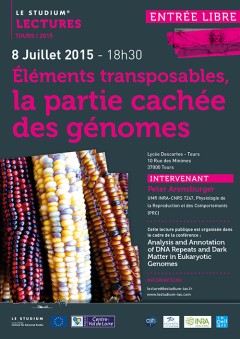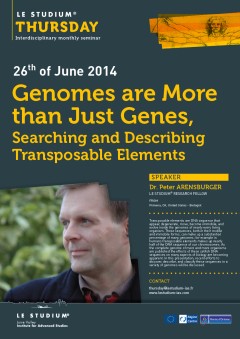Dr Dr Peter Arensburger

Laboratoire d'accueil
INRA Centre Val de Loire - Nouzilly (Physiologie de la Reproduction et des Comportements) - FR
Hôte scientifique
Dr. Yves Bigot
PROJET
Impact de la ségrégation spatiale entre micro et macrochromosomes sur les distributions des deux types d'éléments transposables dans les génomes aviaire
Le champ scientifique de ce projet concerne la dynamique et la distribution des éléments transposables (ETs) dans les génomes aviaires. Son objectif scientifique est de vérifier si l'organisation des génomes aviaires en macro et micro-chromosomes, une caractéristique qui est absente dans les autres taxons animaux, interfère sur la capacité des ETs à transposer et à recombiner au sein des chromosomes. Les résultats attendus sont d'une importance cruciale pour l'amélioration des races car les ETs sont connus pour être une source importante de variabilité génétique chez les espèces eucaryotes et être impliqués dans certains processus de différenciation au cours du développement et de différenciation des tissus.
L'objectif structurant de ce projet est de développer le potentiel d'analyse bioinformatique à haut débit sur les génomes d'animaux d'élevage en soutenant l'émergence d'une nouvelle équipe de recherche en génomique au sein de l'unité de recherche INRA PRC.
Publications
Efforts to elucidate the causes of biological differences between wild fowls and their domesticated relatives, the chicken, have to date mainly focused on the identification of single nucleotide mutations. Other types of genomic variations have however been demonstrated to be important in avian evolution and associated to variations in phenotype. They include several types of sequences duplicated in tandem that can vary in their repetition number. Here we report on genome size differences between the red jungle fowl and several domestic chicken breeds and selected lines. Sequences duplicated in tandem such as rDNA, telomere repeats, satellite DNA and segmental duplications were found to have been significantly re-shaped during domestication and subsequently by human-mediated selection. We discuss the extent to which changes in genome organization that occurred during domestication agree with the hypothesis that domesticated animal genomes have been shaped by evolutionary forces aiming to adapt them to anthropized environments.
Transposable element (TE) science has been significantly influenced by the pioneering ideas of David Finnegan near the end of the last century, as well as by the classification systems that were subsequently developed. Today, whole genome TE annotation is mostly done using tools that were developed to aid gene annotation rather than to specifically study TEs. We argue that further progress in the TE field is impeded both by current TE classification schemes and by a failure to recognize that TE biology is fundamentally different from that of multicellular organisms. Novel genome wide TE annotation methods are helping to redefine our understanding of TE sequence origins and evolution. We briefly discuss some of these new methods as well as ideas for possible alternative classification schemes. Our hope is to encourage the formation of a society to organize a larger debate on these questions and to promote the adoption of standards for annotation and an improved TE classification.
Transposable elements are driving forces for establishing genetic innovations such as transcriptional regulatory networks in eukaryotic genomes. Here, we describe a silencer situated in the last 300 bp of the Mos1 transposase open reading frame (ORF) which functions in vertebrate and arthropod cells. Functional silencers are also found at similar locations within three other animal mariner elements, i.e. IS630-Tc1-mariner (ITm) DD34D elements, Himar1, Hsmar1 and Mcmar1. These silencers are able to impact eukaryotic promoters monitoring strong, moderate or low expression as well as those of mariner elements located upstream of the transposase ORF. We report that the silencing involves at least two transcription factors (TFs) that are conserved within animal species, NFAT-5 and Alx1. These cooperatively act with YY1 to trigger the silencing activity. Four other housekeeping transcription factors (TFs), neuron restrictive silencer factor (NRSF), GAGA factor (GAF) and GTGT factor (GTF), were also found to have binding sites within mariner silencers but their impact in modulating the silencer activity remains to be further specified. Interestingly, an NRSF binding site was found to overlap a 30 bp motif coding a highly conserved PHxxYSPDLAPxD peptide in mariner transposases. We also present experimental evidence that silencing is mainly achieved by co-opting the host Polycomb Repressive Complex 2 pathway. However, we observe that when PRC2 is impaired another host silencing pathway potentially takes over to maintain weak silencer activity. Mariner silencers harbour features of Polycomb Response Elements, which are probably a way for mariner elements to self-repress their transcription and mobility in somatic and germinal cells when the required TFs are expressed. At the evolutionary scale, mariner elements, through their exaptation, might have been a source of silencers playing a role in the chromatin configuration in eukaryotic genomes.



